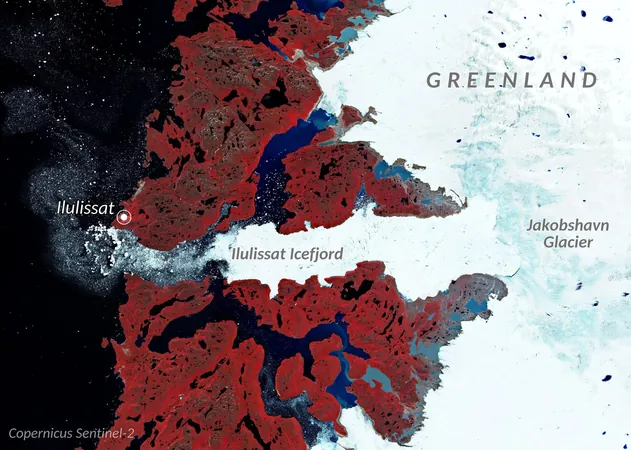
The Ice Meltdown: How Satellite Tech is Unveiling the Secrets of Glacial Change
2025-07-08
Author: Sarah
Melting Glaciers: A Global Shift
All around the globe, glaciers are not just melting—they are rewriting our planet’s landscape and climate. Researchers from Vilnius University, Elzē Buslavičiūtė and Dr. Laurynas Jukna, are leveraging satellite data to closely monitor these icy giants, decoding their movements and responses to our changing climate through advanced remote sensing technologies.
Are Glaciers Really Static?
Often misunderstood as immobile masses of ice, glaciers are, in fact, dynamic entities. They move, shift, and evolve, acting as sensitive indicators of Earth’s health and the impact of human activities. These frozen giants tell a compelling story about how our planet is transforming.
The Global Glacial Landscape
Currently, around 200,000 glaciers stretch across Earth. Most of these are smaller mountain glaciers, also known as ice caps. However, the colossal ice sheets of Greenland and Antarctica dominate, covering staggering areas of 1.7 million km² and 14 million km², respectively. Together, they contain an overwhelming 99% of the world's ice and 68% of its freshwater.
The Harsh Reality of Climate Change
The consequences of climate change are stark: glaciers worldwide have been losing mass at an alarming rate. Between 2000 and 2023, they shed approximately 273 billion tons of ice per year—an annual sea-level rise of 0.75 mm. Dismayingly, this figure soared to an estimated 450 billion tons in 2024 alone.
Understanding Glacial Dynamics
As glaciers melt, they experience a negative mass balance—where the loss of ice surpasses new snow accumulation. This balance is intricately linked to glacier flow velocity, which fluctuates due to climate conditions and can influence the overall mass of ice flowing into the ocean.
Tracking Glacier Movements with Satellites
Greenland’s monumental ice sheet—one of the largest on the planet—boasts around 22,000 glaciers, with Jakobshavn Glacier being one of the fastest-moving. This glacier alone accounts for about 6.5% of the Greenland Ice Sheet and generates a whopping 10% of all icebergs calving from its coast. Each year, it releases about 35 billion tons of ice into the sea.
Jakobshavn Glacier: A Fast-Moving Phenomenon
Notably, Jakobshavn Glacier flows at speeds of up to 40 meters per day. Yet recent satellite data reveals a worrying slowdown, highlighted in velocity maps that track its movement over time. Using advanced offset tracking technologies, scientists can determine how far this glacier has traveled, uncovering dramatic shifts in its flow dynamics.
Deceleration Detected
According to the European Space Agency's Sentinel-1 satellite data, Jakobshavn Glacier had an average flow speed of only 18.6 meters per day in 2024—a significant drop from previous decades. This deceleration, particularly pronounced where it meets the Ilulissat Icefjord, raises pressing questions about the future of global sea levels.
The Bigger Picture
The ongoing transformation of glaciers speaks volumes about our climate crisis and the urgent need for action. As we harness satellite technology to observe these changes, we gain vital insights that can guide environmental policies and strategies. The fate of our glaciers is intricately tied to the health of our planet, and understanding their plight is more critical than ever.


 Brasil (PT)
Brasil (PT)
 Canada (EN)
Canada (EN)
 Chile (ES)
Chile (ES)
 Česko (CS)
Česko (CS)
 대한민국 (KO)
대한민국 (KO)
 España (ES)
España (ES)
 France (FR)
France (FR)
 Hong Kong (EN)
Hong Kong (EN)
 Italia (IT)
Italia (IT)
 日本 (JA)
日本 (JA)
 Magyarország (HU)
Magyarország (HU)
 Norge (NO)
Norge (NO)
 Polska (PL)
Polska (PL)
 Schweiz (DE)
Schweiz (DE)
 Singapore (EN)
Singapore (EN)
 Sverige (SV)
Sverige (SV)
 Suomi (FI)
Suomi (FI)
 Türkiye (TR)
Türkiye (TR)
 الإمارات العربية المتحدة (AR)
الإمارات العربية المتحدة (AR)